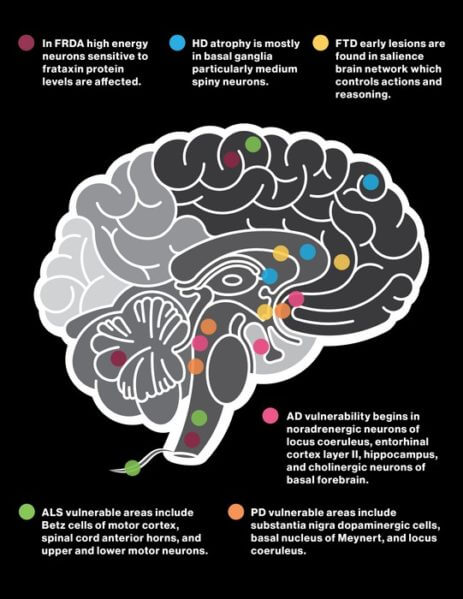There are many different diseases that affect the brain and cause serious problems with thinking and movement. These diseases are often fatal and have had a major impact on society.
However, a new study suggests that many of these diseases may have similar origins and develop in different ways.
In a study published in the journal Alzheimer’s & Dementia, researchers looked at six different neurodegenerative diseases: Amyotrophic Lateral Sclerosis (also known as Lou Gehrig’s disease), Alzheimer’s disease, Friedreich’s ataxia, frontotemporal dementia, Huntington’s disease, and Parkinson’s disease. The researchers used a special machine learning method to analyze RNA (a type of molecule) in blood samples. By comparing the RNA in these samples, the researchers were able to see which RNA markers were common to multiple diseases and which were unique to each disease.
The researchers found that the six diseases had several common features, including problems with the regulation of genes, inflammation, the immune system, protein synthesis, cell death, the structure of cells, the breakdown of proteins, and the way cells use energy. These problems were all linked to specific problems in the brain that are characteristic of each disease.
The researchers also found some unique features for each disease that may be related to the development of the disease. For example, while all six diseases were linked to problems with the connections between brain cells (synapses), only Alzheimer’s disease had problems with a protein complex called the spliceosome. This complex is important for the proper function of cells and defects in splicing RNA (a process the spliceosome is involved in) have been linked to disease.
The study suggests that it may be possible to use blood tests to diagnose neurodegenerative diseases at an early stage, which could lead to earlier treatment and possibly even prevention. Currently, many neurodegenerative diseases are difficult to accurately diagnose and are resistant to treatment. For example, while genetics do play a role in the development of Alzheimer’s disease, the exact cause is not known. The hope is that by understanding the common and unique features of these diseases, researchers will be able to develop better treatments and ways to prevent them.

